Dashain – The Biggest Festival of Nepal
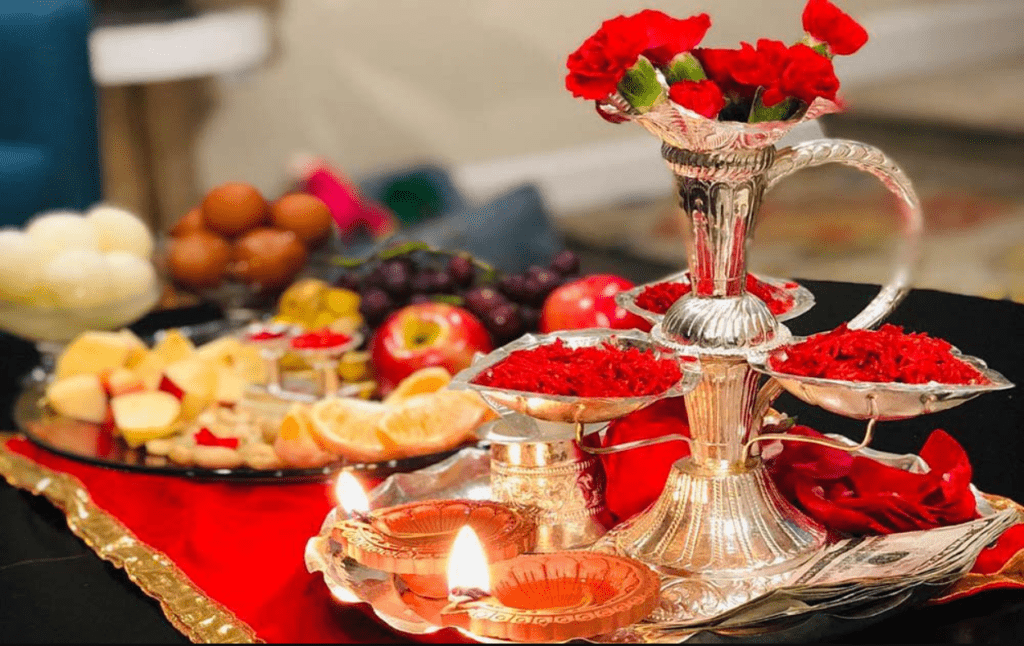
Bada Dashain बडादशैँ also known as Bijaya Dashami is Nepal’s most intensely celebrated festival. It is celebrated by the Hindus and Kirats i.e. all caste and creed of Nepal. It is one of the most auspicious longest festivals each day celebrated to worship Nava Durga namely Brahmayani, Maheshwari, Indrayani, Barahi, Kumari, Bhadrakali, Tripurasundari, Mahalaxmi, and Mahakali. During this period, almost all Nepalese from around the globe returns to their hometown to celebrate this festival together with their friends and family. Every institution including the government offices, schools remains closed during this festival period. This festival falls in September and October period starting from the first day after the no-moon day Shukla Paksha (bright lunar fortnight) to Purnima (full moon). Here we have highlighted the most important days of Dashain and how it is celebrated.
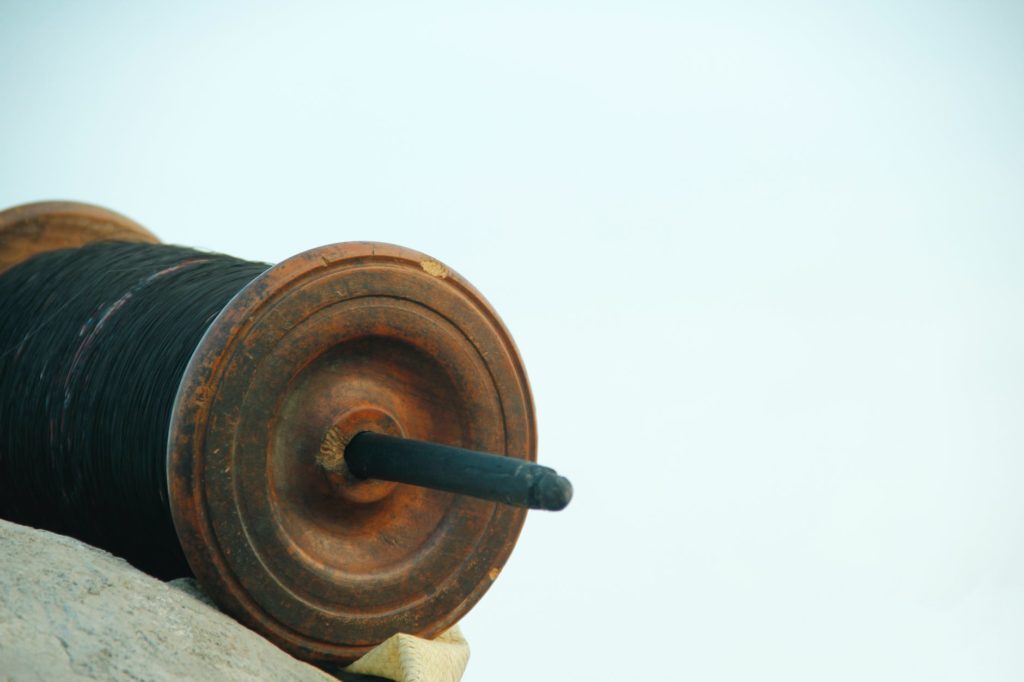
1. Ghatasthapana (First Day)
Ghatasthapana घटस्थापना is the 1st Day of the biggest festival of the Nepalese year – Dashain. It is also known as Kalashthapana /Sharadiya Navaratri शारदीय नवरात्रि. Nepalese Ghata means “Pot/Vessel” and Sthapana means “to establish” which means to establish a pot. In Bikram Sambat Calendar – the first day after the no-moon days (bright lunar fortnight) is celebrated as the Ghatasthapana.
Nepal is a multi-ethnic country with 4 different Castes and 36 Barnas. Every caste and religions celebrate Dashain in their own traditional way. On this holy day, almost all household cleanse their most sacred place – the puja room, and the whole house is cleaned to establish Ghata near the goddess Navadurga. The Ghata is clay or copper made pot – Kalash filled with holy water collected from nearby Navadurga temples – taps and river banks, holy grass (दूबो), flowers to cover the top, rice mixed with turmeric (Akshyata), beetle nuts, gems, or gold coin.

Along with the holy water, sand is also collected to grow barley seeds into “Jamara” during the 10 days till Dashain. The sand is spread around the Kalash in the puja room and the seeds are spread at a certain favorable time of the day. The sand bed and pot is kept wet by holy water every morning till Dashami. Priests in temples and elders at home chants Chandi path prayers during this procedure to request goddess Durga to bless the Ghata with resting herself for the 10 days till Dashain. Ghata is offered flowers, food items, and colorful powders with a burning oil lamp burning every day during these 9 days of Devi Durga till Vijaya Dashami. On the tenth day, the grains grow about 3 inches or 5 inches which are then cut and given as Prasad to family members, friends, and neighbors as Jamara. It is put on the heads by the elders when blessings are given during the Vijaya Dashami.
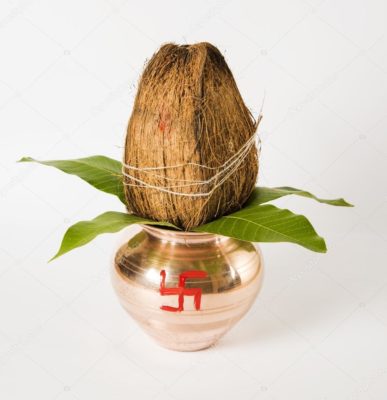
iMartNepal provides festivity goods, god and goddess statues (Murti), and other ingredients used during festivals like Dashain and Tihar. Whether you want to place sacred god/goddess statues in your puja room, or religious materials Puja Thali, Tika, or native attires like Dhaka Topi or Daura Suruwal to wear them during the celebration, we supply them all. Ping us in our Chatbox or Facebook to share your requirements with us – Contact us now.
Chandi Path (चण्डी पाठ)
“मम महामायाभगवती ( वा मायाधिपति भगवत ) प्रीतये ( आयुर्बलवित्तारोयसमादरादिप्राप्तये वा ) नवरात्रव्रतमहं करिष्ये।”
2. Fulpati (Seventh Day)
Bada Dashain celebrates Devi Durga – the ten mother goddess and her victory over the evil buffalo demon Mahishasura. The epic battle against Mahishasura ended with his death on Vijaya Dashami. The seventh day of Bada Dashain – Phulpati or Saptami is celebrated with auspicious flowers decorating homes as Dashain Ghar in every household in Nepal. In Kathmandu valley, a Ghata prepared with the Jamara, banana stalks, and sugar cane tied with red cloth is brought from Gurkha by the Brahmins to offer the Royals monarch. Hundreds of people with all the high-officials attend a special parade ceremony at the Tundikhel grounds to witness The Nepal Army, Nepal Police Force, and civil service, and all related officials march with a procession and cultural pageantry from Hanuman Dhoka.
3. Maha Ashtami (Eighth Day)
Maha Ashtami is also known as Durgasthami and is celebrated on Ashwayuja Shukla Asthami. On the 8th day of Bada Dashain – Maha Asthami, Durga Bhawani, Bhadrakali, and Maha Gauri – different incarnations of Navadurga is highly worshipped by sacrificing sacred animals. Ayudha and Astra mean weapons are also worshipped on this day. The night of Asthami is called “Kal Ratri” hundreds of goats, sheep, and buffaloes are sacrificed in Kali’s temples and households. In Kathmandu valley, the night is celebrated with feasts called “Kuchi Bhwe” means mana of beaten rice and a variety of compulsory dishes.
Asthami Mantra
श्वेते वृषे समारुढा श्वेताम्बरधरा शुचिः ।
महागौरी शुभं दघान्महादेवप्रमोददा ॥
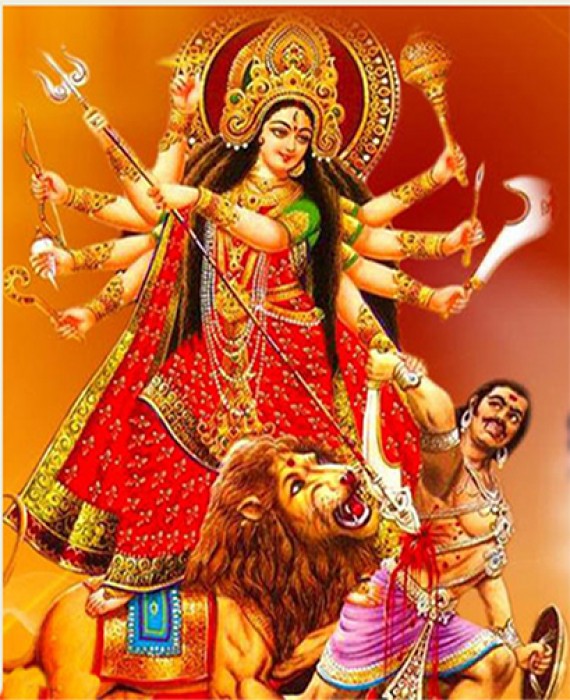
4. Maha Navami (Ninth Day)
The last of Nava Durga during Dashain is Maha Navami. It is the 9th day of Bada Dashami that ends Navratri. The day is specially celebrated as the day when Durga finally defeated the evil buffalo demon Mahisasura. To mark this victory, she is named Mahisasurmardini. In Kathmandu valley, people visit local Durga temples and then to the elders of the family to offer prayers for blessings and enjoy festive treats. Local craftsmen, traders, mechanics offer animal sacrifices to their tools, machines, vehicles, and equipment. There is a huge belief that worshipping them prevents accidents over the year. The office military sacrifices animals on the “Kot” courtyard of all three Durbar Squares – Kathmandu, Patan, and Bhaktapur. This is the only day when the door of the notorious Taleju Temple is opened for the public to worship the Goddess inside.
5. Vijaya Dashami (Tenth Day)
The infamous day Vijaya Dashami is the 10th day of Bada Dashain. Almost all Nepalese celebrate this day with great zeal and enthusiasm with their friends and family. People visit their elders for blessings and put Tika (rice grains mixed with crimson powder) and Jamara. An auspicious time set by great country priests for Tika in this day while this process goes on to 5 more days till the Purnima as family visits all their elder relatives.
Dashain is celebrated for the victory of truth over the evil, good over the bad. It reminds us that evil may be strong for time; the truth and good always prevails. It is also called Dashahra where Dasha means bad fortune and Hara means take away which simply means – “Take away ill fortune”.
Dashain Mantra
सर्व मंगल मांगल्ये शिवे सर्वार्थ साधिके । शरन्ये त्रयम्बिके गौरी नारायणी नमोस्तुते ।।
शरणागत दीनार्तपरित्राण परायणे। सर्वस्यातिहरे देवि नारायण नमोस्तुते।।
सर्वस्वरूपे सर्वेशे सर्वेशक्तिसमन्विते । भयेभ्यस्त्राहि नो देवि दुर्गे देवि नमोऽस्तु ते ।।
रोगनशेषानपहंसि तुष्टा। रुष्टा तु कामान् सकलानभीष्टान्।।
त्वामाश्रितानां न विपन्नराणां। त्वमाश्रिता हृयश्रयतां प्रयान्ति।।
सर्वाबाधा प्रशमनं त्रैलोक्यस्याखिलेश्वरि। एवमेव त्वया कार्यमस्मद्दैरिविनाशनम्।।
सर्वाबाधा विर्निर्मुक्तो धनधान्यसुतान्वित:। मनुष्यो मत्प्रसादेन भविष्यति न संशय:।।
जयन्ती मङ्गला काली भद्रकाली कपालिनी । दुर्गा शिवा क्षमा धात्री स्वाहा स्वधा नमोऽस्तु ते ।।
देहि सौभाग्यमारोग्यं देहि देवि परं सुखम् ।
रूपं देहि जयं देहि यशो देहि द्विषो जहि ॥
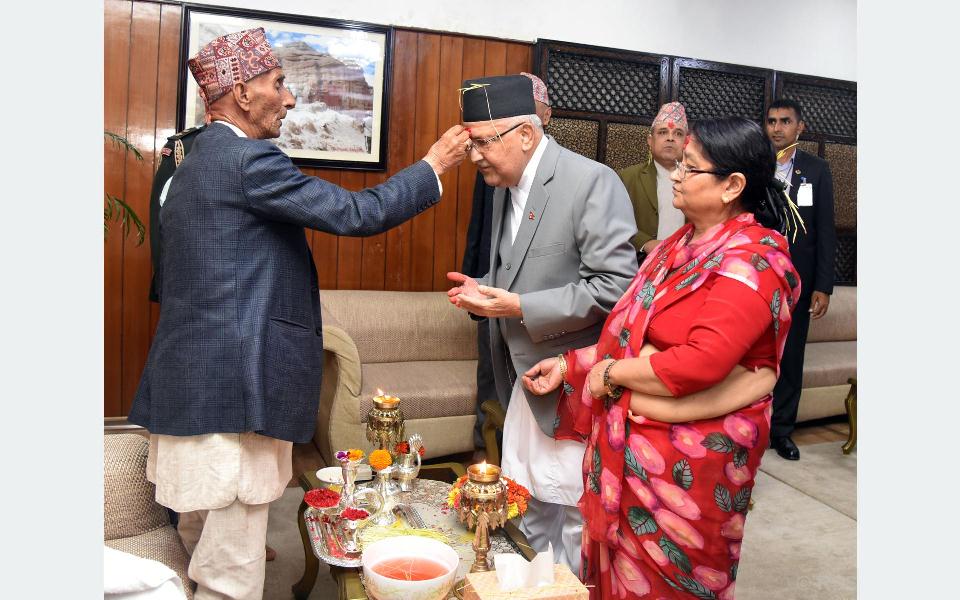
iMartNepal provides festivity goods, god and goddess statues (Murti), and other ingredients used during festivals like Dashain and Tihar. Whether you want to place sacred god/goddess statues in your puja room, or religious materials Puja Thali, Tika, or native attires like Dhaka Topi or Daura Suruwal to wear them during the celebration, we supply them all. Ping us in our Chatbox or Facebook to share your requirements with us – Contact us now.








Leave a Reply